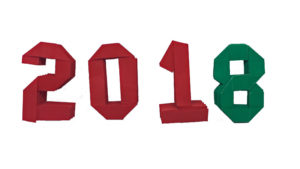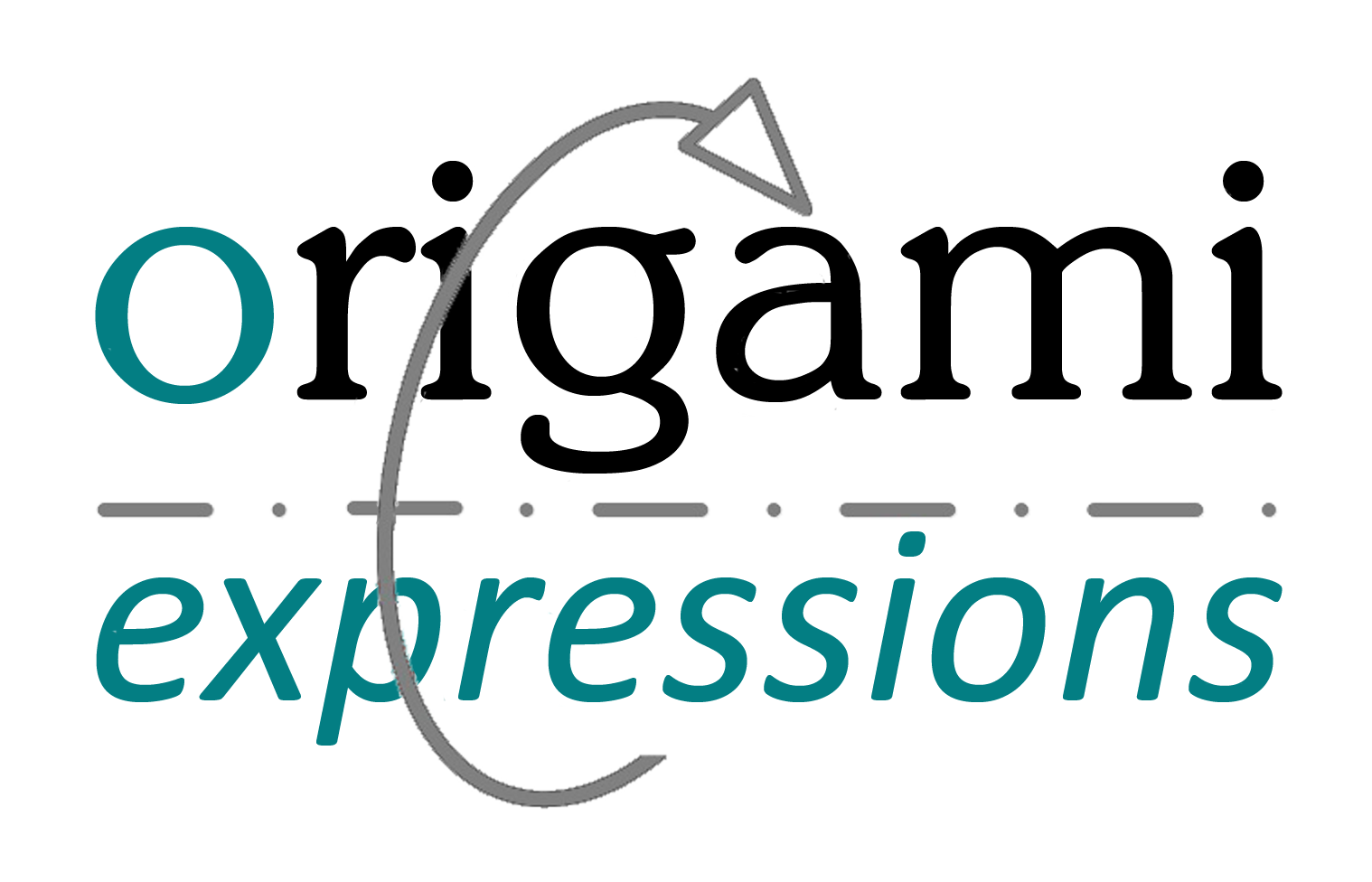
New Year’s Resolution: To tolerate fools more gladly, provided this does not encourage them to take up more of my time
-James Agate
Looking Ahead
We’ve reached the last week of the calendar, the diary is down to its last few pages, and so it’s time to start thinking of resolutions for the new year. This is a good opportunity to think about what your origami goals are for the next twelve months. Here are a few suggestions to suit different levels of origami ability, and my own origami new years resolutions for 2018!
Note: This post contains affiliate links. Please see disclosure for more information.
Suggested Origami New Years Resolutions for any ability
1. Fold 1000 cranes
You may remember the story of Sadako. Dying from leukemia, she set herself the goal of folding 1000 cranes and prayed for world peace. This resolution is not difficult but it does take dedication. Click here for more information on Sadako’s story. I have also seen some people set the goal of folding 1000 origami stars.
If you want to fold 1000 cranes you can buy a kit with all the paper and string you need like this one here.
2. Fold something every day
If you really want to improve your origami, you need to practice. If you make the resolution to fold something every day, I guarantee you will become a better folder. This resolution can be challenging because you can’t take a day off. On days you are tight on time, you can always just fold a simple model.
You might want to get one of those origami calendars to help you with ideas. Click here to check out the different options available on Amazon.
3. Attend an Origami Convention!
This is by far the best way to find out what’s going on in the origami world. I have really enjoyed my visits to both the OrigamiUSA Convention and the British Origami Society (BOS) Convention. Take a look at the exhibition and get inspiration for your next model, stock up on paper, buy a new origami book, or just sit in the bar and with friends. The British Origami Society also has mini-meetings around the country every month.
Take a look at the websites for the British Origami Society and OrigamiUSA for more information.
4. Try Wetfolding
Wetfolding is the technique of folding the paper while it’s a little damp to create soft creases and lines, by persuading the paper to hold its shape as it dries. Wipe a slightly moist cloth over the paper and then fold. It doesn’t need to be dripping – the idea is to get the paper a bit damp, not turn it into a soggy pulp. It takes a bit of practice to get right, but even simple models can look interesting folded this way. There is a good video explaining wetfolding on the QuietMaverick YouTube channel.
5. Design Your Own Origami Model
Any ability? Really? Yes! You don’t have to be a master of the most complex origami folds to design something. Some designers come up with their works by ‘doodling’ – experimenting with what the paper looks like if you just start folding. (That’s how I came up with my designs – Man in a Boat and the origami teapot.)
If you really want to become an artist you need your own designs. Give it a go! Of course, if you’d like to take a more methodical approach to design, you could start by reading Robert Lang’s book, Origami Design Secrets.
Origami New Years Resolutions for Different Ability Levels
6. For beginners: Learn How to Fold A Basic Model Like a Crane
If you haven’t really tried origami you need to start somewhere! First, you will need to learn to fold the origami bases. Then you can move on to folding a traditional crane or another simple model. You might not get it right the first time, but this is a resolution anyone can do.
7. For beginners looking to stretch themselves a bit: Fold an intermediate level model.
You’ve been folding simple stuff for a while, you’ve got the different types of folds sorted out, now it’s time to take things a bit further. Try Eric Joisel’s Rat. It’s a fun design and there’s a good video tutorial available to follow.
8. For intermediate level folders: Push yourself a bit! Fold an advanced level model.
Choose a model that is a little outside your comfort zone to fold. Find something that includes some of those moves you always avoid – those tricky sinks and unsinks, or maybe you struggle with the accuracy needed for box-pleating. Why not try Eric Joisel’s Dwarf?
9. For intermediate level folders: Fold your first model from just the crease pattern (CP).
There are some beautiful designs out there that don’t have diagrams, just crease patterns. Don’t be put off by this, it’s just a question of learning to recognise how crease patterns ‘work’. Brian Chan’s Dobsonfly is a perfect place to start. It looks spectacular and it’s a look easier than it seems. Not convinced? Here’s a hint: Count the number of wings and legs on the model, then look at the crease pattern again.
10. For advanced folders: Fold something iconic
There are a lot of stunning designs out there that have that ‘oh wow’ factor, but take a bit of time to fold. Been meaning to fold the Ancient Dragon for ages? Make this the year you dust off that Kamiya book and finally get it done!
My Origami New Years Resolution
Here’s my resolution for 2018: I’m going to design my own model from scratch. I’ve been threatening to do this for years, so this year I’m going to make the time to actually do it. I’ll write a blog about it and include instructions when I have!
Update 2020: It may have taken a little longer than planned, but I have designed several new models. In fact, I designed 10 models for my book, Origami Made Simple. This is an origami book for beginners or those that like folding easy origami designs. 30 of the models are traditional designs and another 10 are my own creations (like the Five Fold Penguin). The book progresses in difficulty with each chapter, starting at 10 steps or less, up to a maximum of 25 steps.
Origami Made Simple can be purchased here.
Sticking to it
You are more likely to keep your New Year’s resolution if you tell others about it, so with that in mind let me know what your Origami New Year’s resolution is in the comments. If you let me know what your plans are, I’ll check in with you every now and again to see how you are getting on.
Let’s Connect
The numbers in the picture above were designed by Jo Nakashima. If you’d like to find out more about how I made them, check out this post about origami letters and numbers.
Feel free to let me know what your Origami goals are in the comments below, or you find can me on Instagram or Twitter. Check out my Pinterest boards too!
Sign up for my origami newsletter here and get our free Origami eBook.
Disclosure
This page contains affiliate links and I may receive some small commission for purchases made through the links on this page. This hasn’t affected my decision to recommend a product – I value my personal and professional reputation and would not endorse a product or supplier I did not believe in. There is no additional cost to you for purchasing through this page.
As an Amazon Associate, I earn from qualifying purchases. Origami Expressions is a participant in the Amazon Services LLC Associates Program, an affiliate advertising program designed to provide a means for sites to earn advertising fees by advertising and linking to amazon.com, amazon.co.uk, amazon.ca. Amazon and the Amazon logo are trademarks of Amazon.com, Inc. or its affiliates.
